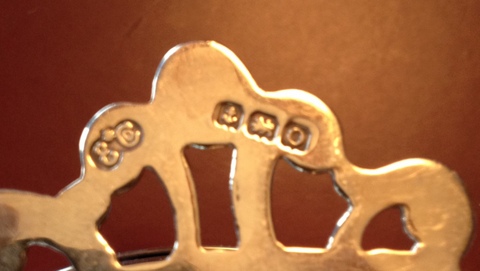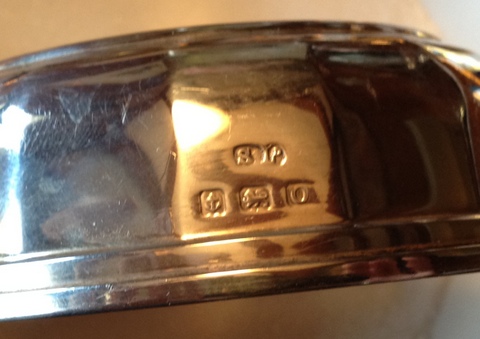Is there a way to distinguish between a capital O and a lowercase O on a Birmingham piece? I have a tea strainer and rest (by different makers), both hallmarked “O,” which means either 1913 or 1938. I’m guessing the difference is in the anchor – am I right?


I don’t think there is an easy way - I’ve never been able to see any sort of difference anyway. To my eye the anchors of the 1900-1924 and 1925-1949 series look identical. So for me the Elkington mark could be either 1913 or 1938 but the SLd (William Suckling Ltd) mark has to be 1938 as this mark was not used before 1922.
Thanks so much for your information. You have an excellent eye – I had not identified William Suckling’s mark.
As far as the anchor goes, Judith Banister’s Dealer Guides: English Silver Hallmarks (1995) gives on p.32 illustrations of the anchors for the 1900-1924 and 1925-1949 series that suggest the upper cross-arm for the earlier series is much shorter than that for the later series. But I haven’t been able to compare actual examples.
Thanks again,
Christopher
I have a number of images of Birmingham hallmarks and can confirm that the length of the cross-arm is not consistent through a full cycle. There seems to be quite a mixture of lengths so I don’t think we can use that as an indicator. I suspect that the size of the letter o or O may be an indication but the difference is so small that normal wear and tear becomes more significant.
The date is 1882